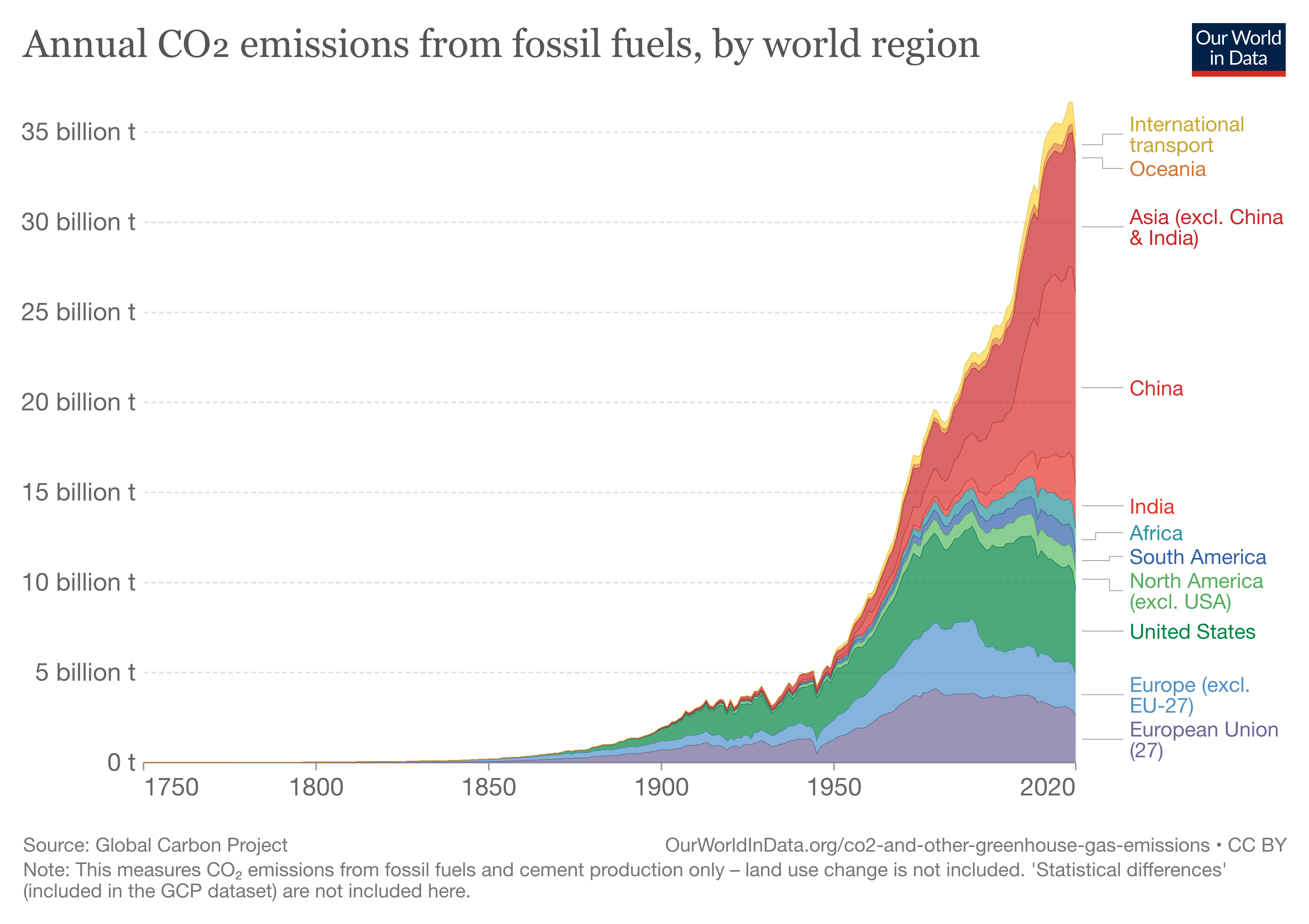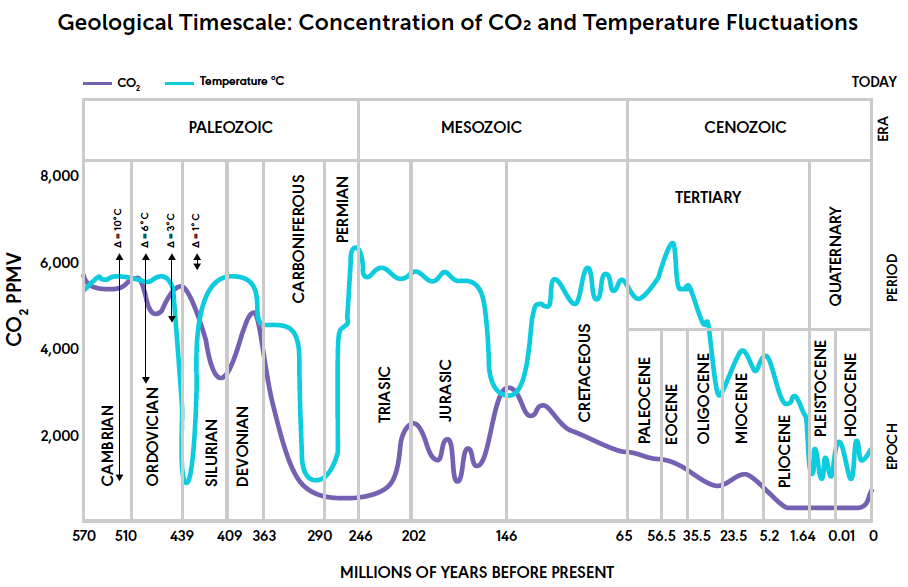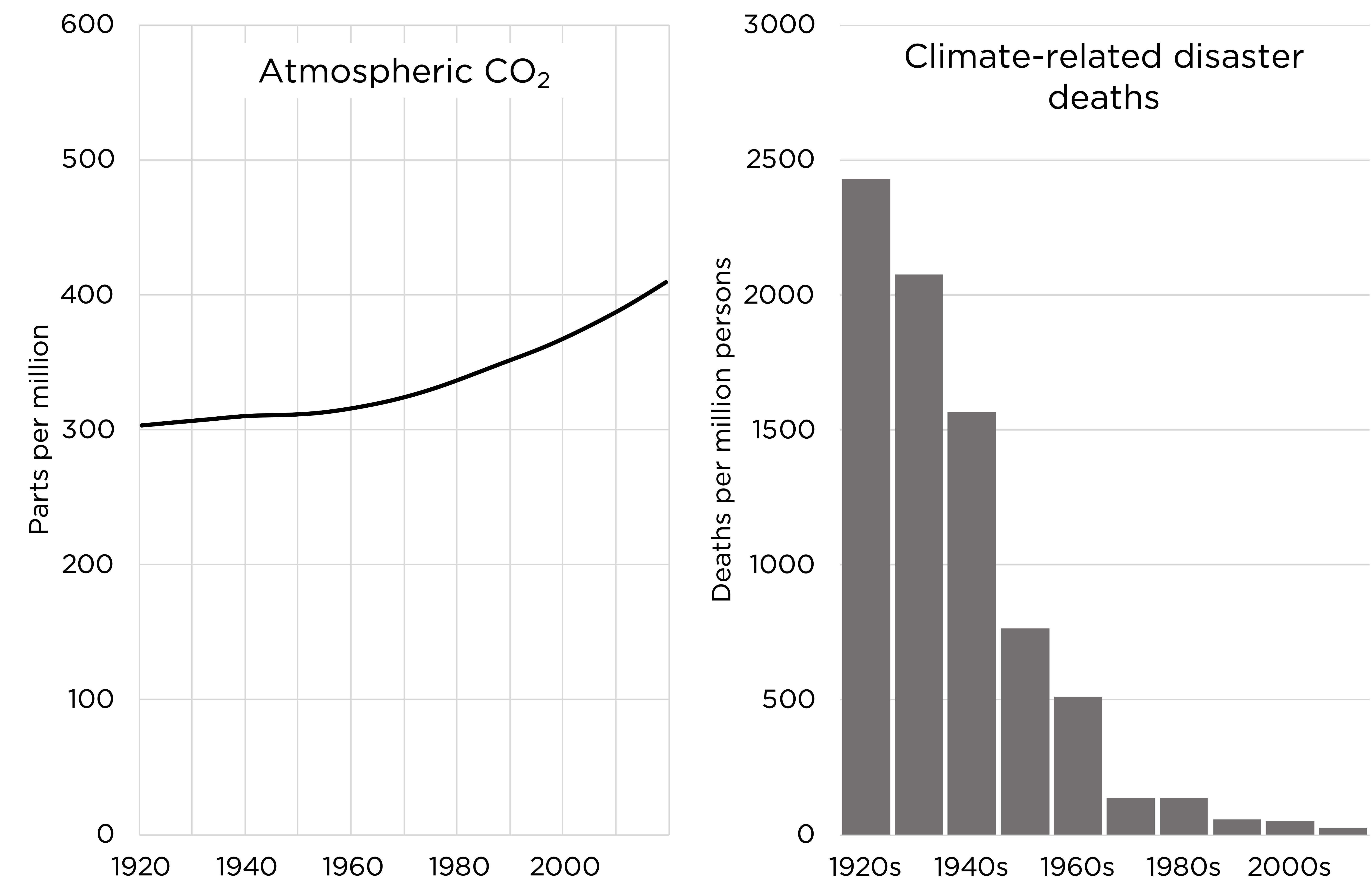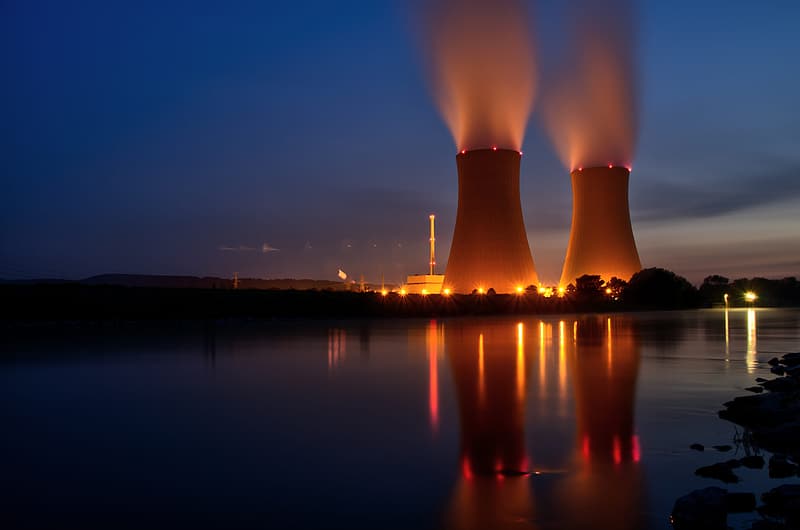Originally published on August 24, 2022
America is taking a “punish America” approach to reducing CO2, making our energy more expensive and less reliable while China, Russia, and others increase their emissions.
We need a “liberate American innovation” policy instead.
The Reality
-
The only moral and practical way to reduce CO2 emissions is innovation that makes low-carbon energy globally cost-competitive. So long as fossil fuels are the most cost-competitive option for people, especially in developing nations, they will (rightly) choose to emit CO2.
-
The US causes < 1/6 of global CO2 emissions—and falling. The main reason global CO2 emissions are rising is because billions of people in the developing world are bringing themselves out of poverty by using fossil fuels to power factories, farms, vehicles, and appliances.1

-
The developing world overwhelmingly uses fossil fuels because that is by far the lowest-cost way for them to get reliable energy. Unreliable solar and wind can’t come close. That’s why China and India have hundreds of new coal plants in development.2
-
The only way to lower CO2 emissions and benefit America is to promote innovation that makes low-carbon energy truly reliable and low-cost. Are China and India going to stop using fossil fuels so long as they are the lowest-cost option? They won’t and they shouldn’t.
The Opportunity
-
Fortunately, there are low-carbon energy technologies with great promise. For example, nuclear energy provided low-cost, reliable electricity in the 1960s and 1970s, and has shown great promise for providing industrial process heat as well as power for heavy-duty transportation.3
-
What promising low-carbon energy technologies need above all to become cost-competitive is freedom to innovate. Entrepreneurs need to be free to rapidly test, implement, and evolve their ideas—whether for a promising nuclear power plant design or for a new type of deep geothermal well.
The Problem
-
Instead of low-carbon energy evolving to become more cost-effective than fossil fuels, we are seeing huge government preferences for solar and wind “solutions” that make electricity more expensive and less reliable, while nuclear is stagnant or declining in much of the world.4
-
America’s and other governments’ promotion of non-cost-effective low-carbon energy and impeding of promising low-carbon nuclear energy has led to a situation where there is no globally cost-competitive low-carbon energy on the horizon.
The Cause
-
Our ineffective and self-destructive approach to low-carbon energy has 2 main causes:
1 Unquestioning obedience to the anti-development “green energy” movement.
2 The false view that rising CO2 levels are a “climate emergency” requiring desperate, crash measures. -
Low-carbon energy policy has been dominated by the “green energy” movement, which is an outgrowth of the anti-development green movement. This movement is hostile to all development because of development’s impact on nature, and therefore is hostile to every form of cost-effective energy.
-
The anti-development “green energy” movement’s enthusiastic support for solar and wind is phony. Just as it opposes fossil fuels, nuclear, and hydro for their impact, in practice it opposes the massive mining, construction, and transmission-line-building “green energy” requires.5
-
Low-carbon energy policy has also failed because it has been dominated by the false idea that the climate impact of rising CO2 levels from fossil fuel use constitutes a “climate emergency” requiring desperate, crash programs that inevitably punish America.
-
The latest example of the desperate approach to CO2 reduction was the Orwellian “Inflation Reduction Act,” which was rushed through Congress without any real discussion—and which in practice will enrich the green lobby while devastating our grid.
Stop The Manchin Green New Deal -
While “climate change”—humans impacting climate—is real, “climate emergency” is not. The world is slowly becoming warmer—at a cold point in geological history, when many more people die of cold than of heat. This doesn't at all justify rapidly restricting global fossil fuel use.6
-
The truth is that fossil fuels' CO2 emissions have contributed to the warming of the last 170 years, but that warming has been mild—1° C, mostly in the colder parts of the world. And life on Earth thrived (and was far greener) when CO2 levels were at least 5X higher than today's.7

- Fossil fuels actually overall make us far safer from climate by providing low-cost energy for the amazing machines that protect us against storms, protect us against extreme temperatures, and alleviate drought. Climate disaster deaths have decreased 98% over the last century.8

- So long as America follows the anti-development “green energy” movement and the “climate emergency” narrative, it will continue to adopt senseless policies that punish America while doing nothing to bring about globally cost-competitive low-carbon energy.
The Energy Freedom Solution
- The only moral and practical way to reduce emissions long-term is liberating innovation that makes low-carbon energy globally cost-competitive—while ending all policies that punish America via rapid short-term emissions reduction.
Some key policies
-
Reject the false idea of “climate emergency.”
Our government’s disastrous anti-fossil fuel policies are justified by the disastrous conflation of “climate impact,” which is real, with “climate emergency,” which is not, given today's unprecedented safety from climate danger. -
Withdraw from the Paris Agreement and encourage others to do the same.
The Paris Agreement is an immoral agreement that calls for rapidly eliminating fossil fuels, which are the only near-term way to provide reliable energy for billions of people at prices they can afford. -
Reject and eliminate all carbon taxes.
Carbon taxes increase our energy costs based on the false premise that the “negative externalities” of fossil fuels’ CO2 emissions outweigh the “positive externalities” of the uniquely low-cost, reliable energy they provide for billions. -
Amend the Clean Air Act to explicitly reject the bogus “endangerment finding.”
Much of today’s “punish America” CO2 policy is rooted in EPA's “endangerment finding,” which treats fossil fuel use as a net harm to “public health and welfare” even though it radically improves both. -
Decriminalize nuclear energy.
The overregulation of low-carbon nuclear verges on criminalization, making nuclear costs 10X higher than they need to be. Decriminalizing nuclear, including radical reform of the Nuclear Regulatory Commission and Environmental Protection Agency, will make energy far cheaper, safer, and cleaner. -
End all preferences for unreliable electricity.
Today's electric grids are being ruined by systemic preferences for unreliable electricity, which causes prices to rise and reliability to decline. Eliminating them can help make America a leader in low-cost, reliable electricity. -
Allow free-market competition for EVs.
The proper policy toward EVs, which are promising but not cost-effective for the vast majority of Americans, is 1) let them compete on a free market and 2) make sure we have plenty of low-cost, reliable electricity. -
Summary: The pro-human CO2 policy is to reduce CO2 emissions long-term through liberating innovation, not punishing America.
This will ensure plenty of energy for the foreseeable future and enable truly promising alternatives such as nuclear to be globally cost-competitive.
References
-
Our World in Data - Annual CO₂ emissions from fossil fuels, by world region
The U.S. Energy Information Administration in its reference case projects an overall increase of CO2 emissions for the world while America continues to reduce emissions slightly. As of 2017 US CO2 emissions were less than 15% of the global total.
U.S. EIA International Energy Outlook 2019 reference case↩ -
As of July 2022, China and India have over 300 coal-fired power plants with a combined capacity of 221 GW planned or under construction.
Global Energy Monitor - Global Coal Plant Tracker↩ -
Lovering et al. (2016)
Power Hour - How to liberate nuclear energy, with Robert Zubrin↩ -
World Nuclear Association - Plans For New Reactors Worldwide U.S. EIA - U.S. nuclear electricity generation continues to decline as more reactors retire↩
-
Reuters - Biden administration kills Antofagasta's Minnesota copper project Mining.com - Biden administration moves to block Alaska Pebble mine Reuters - Exclusive: Biden looks abroad for electric vehicle metals, in blow to U.S. miners↩
-
The decadally smoothed data from the UK Met Office HadCRUT4 dataset shows an increase of 0.974°C between 1850 and 2019.
UK Met Office HadCRUT4 dataset“The best estimate of CO2 concentration in the global atmosphere 540 million years ago is 7,000 ppm, with a wide margin of error.”
Patrick Moore - THE POSITIVE IMPACT OF HUMAN CO2 EMISSIONS ON THE SURVIVAL OF LIFE ON EARTHNOAA - Climate change rule of thumb: cold "things" warming faster than warm things↩
-
For every million people on earth, annual deaths from climate-related causes (extreme temperature, drought, flood, storms, wildfires) declined 98%--from an average of 247 per year during the 1920s to 2.5 in per year during the 2010s.
Data on disaster deaths come from EM-DAT, CRED / UCLouvain, Brussels, Belgium – www.emdat.be (D. Guha-Sapir).
Population estimates for the 1920s from the Maddison Database 2010 come from the Groningen Growth and Development Centre, Faculty of Economics and Business at University of Groningen. For years not shown, the population is assumed to have grown at a steady rate.Population estimates for the 2010s come from World Bank Data.↩
